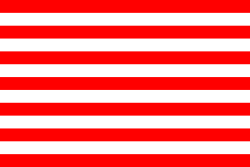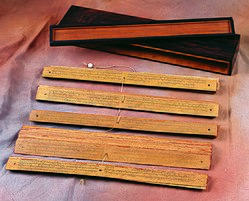Majapahit
Majapahit (Javanese: ꦩꦗꦥꦲꦶꦠ꧀; Javanese pronunciation: [madʒapaɪt]), also known as Wilwatikta[note 3] (Javanese: ꦮꦶꦭ꧀ꦮꦠꦶꦏ꧀ꦠ; Javanese pronunciation: [wɪlwatɪkta]), was a Javanese Hindu-Buddhist thalassocratic empire in Southeast Asia. It was from the island of Java in modern-day Indonesia. It existed from 1293 to around 1527. It was strongest during the era of Hayam Wuruk. He took over many places in Southeast Asia during his reign from 1350 to 1389. According to the Nagarakretagama (Desawarñana) written in 1365, Majapahit was an empire that had land from Sumatra to New Guinea.[4][5][6] Spanning across 2 Continents, It had territory in present-day Indonesia, Singapore, Malaysia, Brunei, southern Thailand, East Timor, and southwestern Philippines (the Sulu Archipelago).
Majapahit Empire | |||||||||
|---|---|---|---|---|---|---|---|---|---|
| 1293–1527 | |||||||||
![The greatest extent of Majapahit influence based on the Nagarakretagama[1] in 1365](https://upload.wikimedia.org/wikipedia/commons/thumb/7/71/Majapahit_Empire.svg/500px-Majapahit_Empire.svg.png) The greatest extent of Majapahit influence based on the Nagarakretagama[1] in 1365 | |||||||||
| Capital | Trowulan, now Mojokerto | ||||||||
| Common languages |
| ||||||||
| Religion | |||||||||
| Government | Absolute monarchy | ||||||||
| Maharaja | |||||||||
• 1293–1309 | Raden Wijaya | ||||||||
• 1309–1328 | Jayanegara | ||||||||
• 1328–1350 | Tribhuwana Wijayatunggadewi | ||||||||
• 1350–1389 | Hayam Wuruk | ||||||||
• 1389–1429 | Wikramawardhana | ||||||||
• 1429–1447 | Suhita | ||||||||
• 1447–1451 | Kertawijaya | ||||||||
• 1451–1453 | Rajasawardhana | ||||||||
• 1456–1466 | Girishawardhana | ||||||||
• 1466–1474 | Suraprabhawa | ||||||||
• 1474–1498 | Girindrawardhana | ||||||||
| History | |||||||||
• | 10 November[2] 1293 | ||||||||
• | 1527 | ||||||||
| Currency | |||||||||
| |||||||||
Majapahit was one of the last big Hindu-Buddhist empires of the region. It is said to be one of the greatest and most powerful empires in the history of Indonesia and Southeast Asia. Its influence went outside the modern territory of Indonesia and has been studied a lot.
Majapahit Media
A maja fruit growing near Trowulan. The bitter-tasting fruit is the origin of the kingdom's name.
Deśarvarṇana palm-leaf manuscript in the National Library of Indonesia collection.
Wayang klithik puppet of Raden Damar Wulan – the hero of Majapahit kingdom
King Kertarajasa portrayed as Harihara, amalgamation of Shiva and Vishnu. Originally located at Candi Simping, Blitar, today it is displayed in National Museum.
The statue of Parvati as mortuary deified portrayal of Tribhuwanottunggadewi, queen of Majapahit, mother of Hayam Wuruk
The terracotta figure popularly believed by Mohammad Yamin as the portrait of Gajah Mada, collection of Trowulan Museum. His claim, however, is not backed by historical background.
Gajah Mada inscription, dated 1273 Saka (1351 AD), mentioned about a sacred caitya building dedicated by Gajah Mada for the late King Kertanegara of Singhasari.
Bronze cannon, called cetbang, Metropolitan Museum of Art, New York, from c. 1470–1478 Majapahit. Note the Surya Majapahit emblem on the bronze cannon.
Notes
- ↑ Surya Majapahit (the Sun of Majapahit) is the emblem commonly found in Majapahit ruins. It served as the symbol of the Majapahit empire.
- ↑ Red and white is the royal color of Majapahit. How the color was used by Majapahit is still disputed, see the related article for explanation.
- ↑ Some Javanese court literatures uses this Old Javanese name, which bears the same meaning as "Majapahit", for example in Nagarakretagama canto 1 stanza 2 and Kidung Harsawijaya. It is sometimes also written backwards as Tiktawilwa, for example in Nagarakretagama canto 18 stanza 4. However it is still more widely known by its Javanese name, as recorded in the hikayats of Aceh, Banjar, Malay, Palembang, etc.
References
- ↑ Hall, D. G. E. (1965). "Problems of Indonesian Historiography". Pacific Affairs. 38 (3/4): 353–359. doi:10.2307/2754037. JSTOR 2754037.
- ↑ Mahandis Y. Thamrin (September 2012). "10 November, Hari Berdirinya Majapahit" (in Bahasa Indonesia). National Geographic Indonesia. Archived from the original on 26 May 2015. Retrieved 27 May 2015.
- ↑ Ooi, Keat Gin, ed. (2004). Southeast Asia: a historical encyclopedia, from Angkor Wat to East Timor (3 vols). Santa Barbara: ABC-CLIO. ISBN 978-1576077702. OCLC 646857823. Archived from the original on 2016-08-08. Retrieved 2022-12-30.
- ↑ Robson, Stuart (1995). Deśawarṇana (Nāgarakṛtagama) by Mpu Prapañca. Leiden: KITLV Press.
- ↑ Cribb, Robert (2013). Historical Atlas of Indonesia. Routledge. ISBN 9781136780578.
- ↑ Majapahit Overseas Empire, Digital Atlas of Indonesian History
Bibliography
- Hall, D.G.E. (1981). A History of South-East Asia (4th ed.). London: The Macmillan Press Ltd. ISBN 978-1-349-16521-6.
- Muljana, Raden Benedictus Slamet (2005). Al-Fayyadl, Muhammad (ed.). Menuju Puncak Kemegahan: Sejarah Kerajaan Majapahit. Yogyakarta: LKiS Pelangi Aksara.
- Nugroho, Irawan Djoko (2009). Meluruskan Sejarah Majapahit. Ragam Media.
- Nugroho, Irawan Djoko (2011). Majapahit Peradaban Maritim. Suluh Nuswantara Bakti. ISBN 978-602-9346-00-8.
- Pigeaud, Theodoor Gautier Thomas (1960a). Java in the 14th Century: A Study in Cultural History, Volume I: Javanese Texts in Transcription (3rd (revised) ed.). The Hague: Martinus Nijhoff.
- Pigeaud, Theodoor Gautier Thomas (1960b). Java in the 14th Century: A Study in Cultural History, Volume II: Notes on the Texts and the Translations (3rd (revised) ed.). The Hague: Martinus Nijhoff. ISBN 978-94-011-8774-9.
- Pigeaud, Theodoor Gautier Thomas (1960c). Java in the 14th Century: A Study in Cultural History, Volume III: Translations (3rd (revised) ed.). The Hague: Martinus Nijhoff. ISBN 978-94-011-8772-5.
- Pigeaud, Theodoor Gautier Thomas (1962). Java in the 14th Century: A Study in Cultural History, Volume IV: Commentaries and Recapitulations (3rd (revised) ed.). The Hague: Martinus Nijhoff. ISBN 978-94-017-7133-7.
- Pigeaud, Theodoor Gautier Thomas (1963). Java in the 14th Century: A Study in Cultural History, Volume V: Glossary, General Index (3rd (revised) ed.). The Hague: Martinus Nijhoff. ISBN 978-94-011-8778-7.
- Prapanca, Mpu (2018). Isidora (ed.). Kakawin Nagarakertagama: Teks Asli dan Terjemahan. Translated by Saktiani, Damaika; Widya, Kartika; Aminullah, Zakaria Pamuji; Marginingrum, Novi; Septi, Neda (2nd (revised) ed.). Yogyakarta: Narasi. ISBN 978-979-168-553-5.
- John Miksic, ed. (1999). Ancient History. Indonesian Heritage Series. Vol. 1. Archipelago Press / Editions Didier Millet. ISBN 9813018267.
- Ricklefs, Merle Calvin (1993). A history of modern Indonesia since c. 1300 (2nd ed.). Stanford University Press / Macmillans. ISBN 9780804721950.
- Ma Huan (1970) [1433]. Ying-yai Sheng-lan (瀛涯胜览) The Overall Survey of the Ocean's Shores. Hakluyt Society (in 中文). translated by J.V.G Mills. Cambridge University Press. ISBN 9780521010320.
Other websites
- A Short History of Majapahit
- Memoirs of Majapahit Kingdom
- A brief history of Majapahit Archived 1 January 2007 at the Wayback Machine
- A Complete Transcription of Majapahit Royal Manuscript of Nagarakertagama from SejarahNasional.org an National History Website, adapted from Muljana, Slamet (1979). Nagarakretagama dan Tafsir Sejarahnya. Bhratara Karya Aksara.








